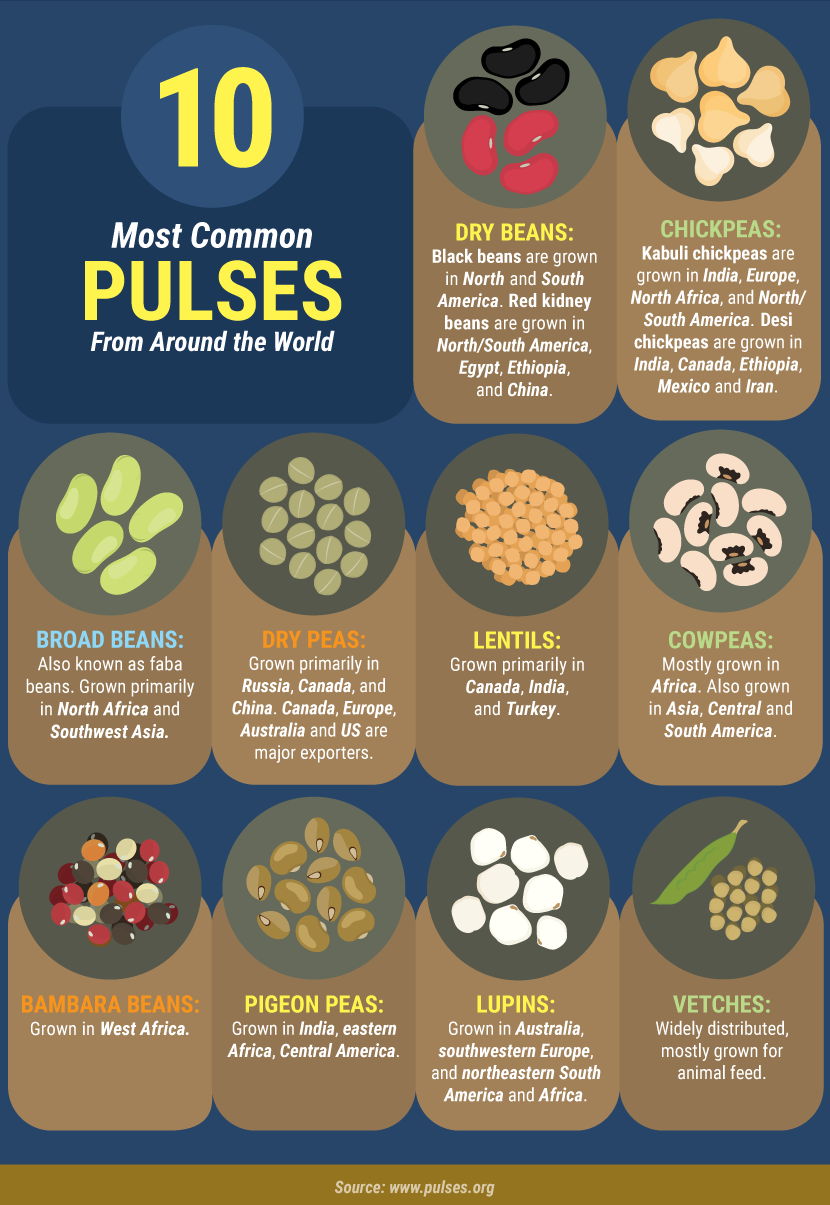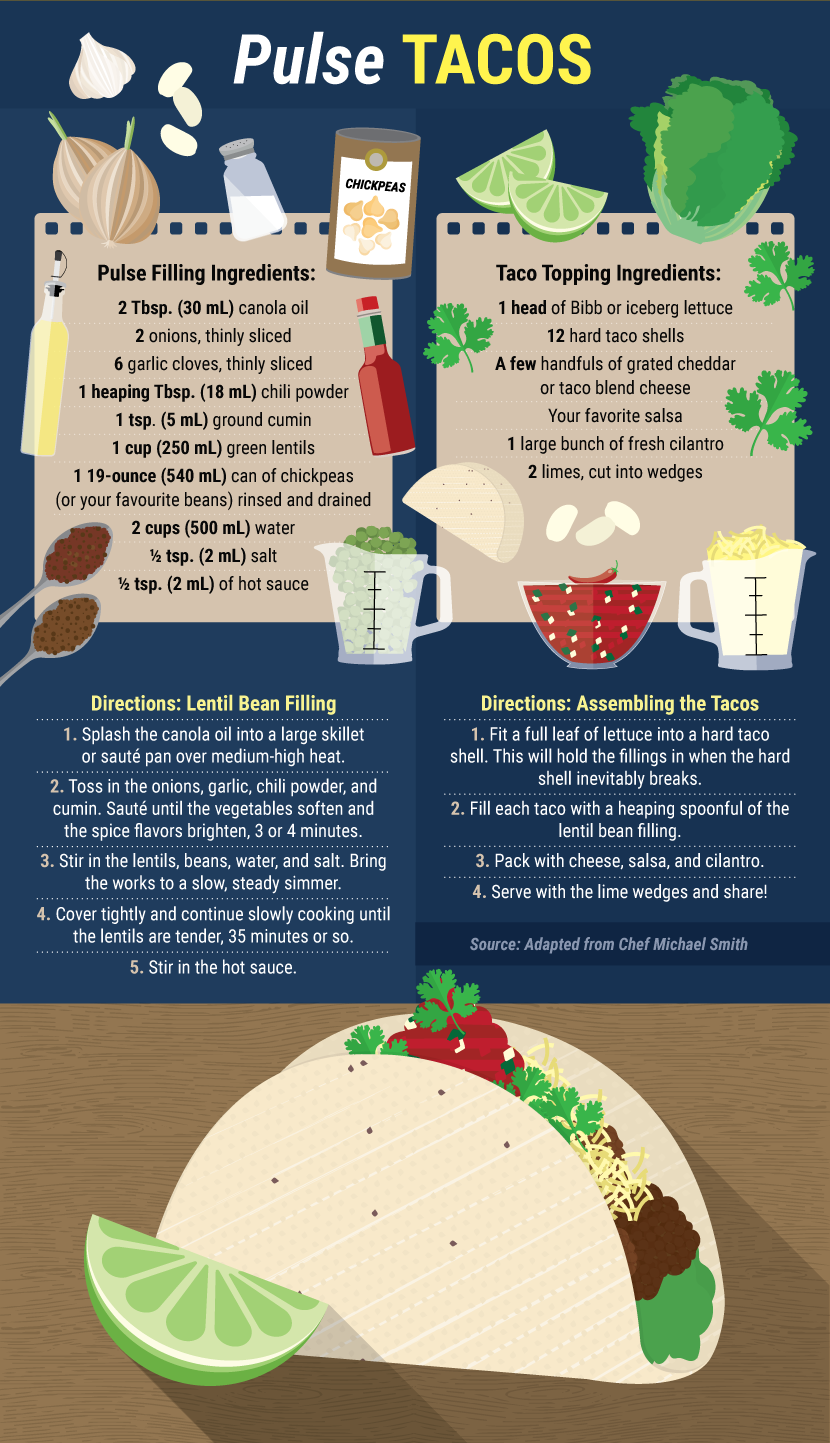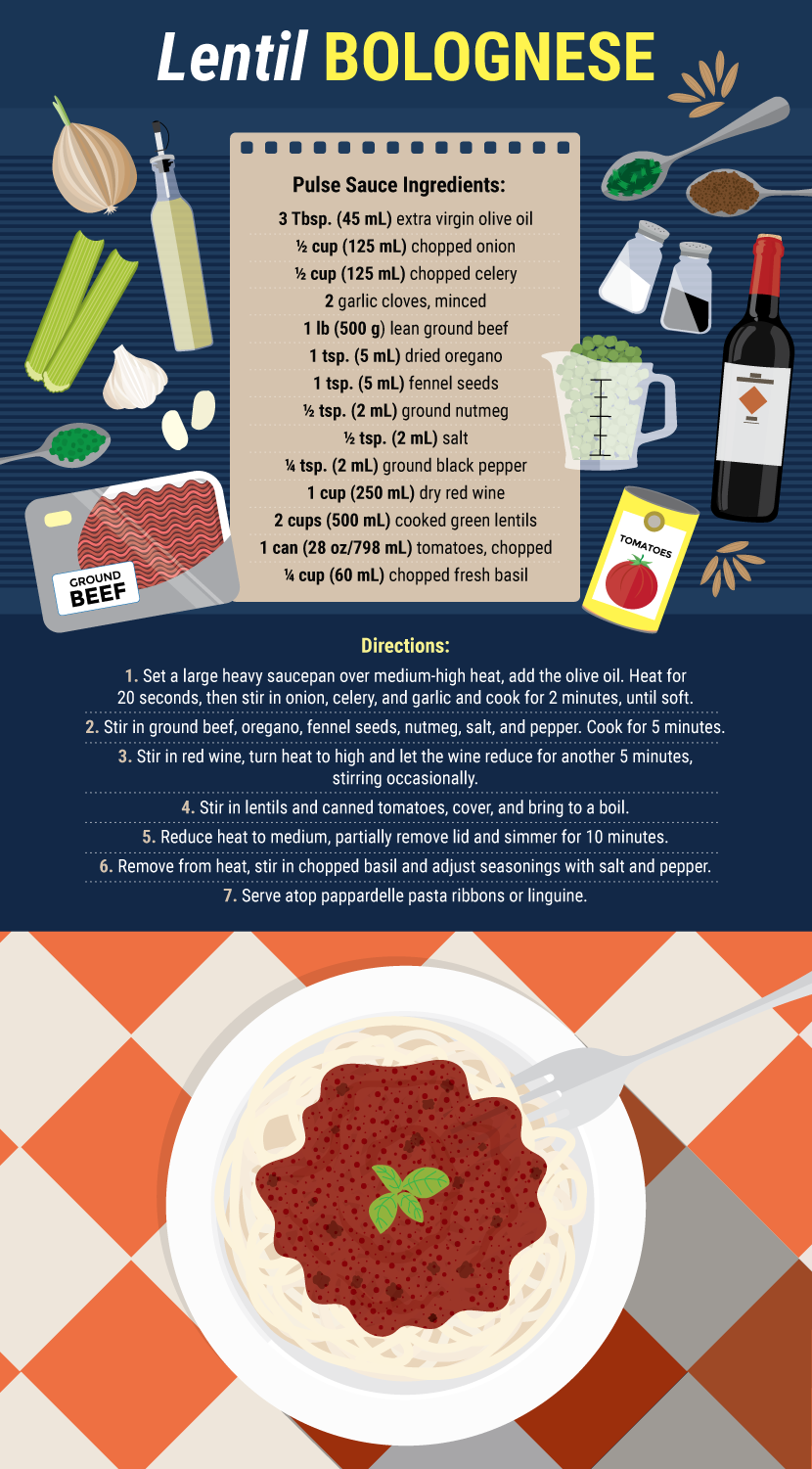Everything You Need to Know about Pulses
Why the United Nations Thinks You Should Be Eating More
Trying to eat healthy can often feel like an exercise in futility. What vegetables
give me
which nutrients? Are carbs good or bad? How much should I be eating? Do I need to count calories?
Are any of these 14 diets I just read about in the past 14 minutes worth trying?
What happened to the sage advice of yesteryear to simply eat a balance of foods in moderate
portions and get some exercise? We often get so tangled up in the nitty-gritty of exactly what
and what not to eat that it makes our lives more difficult than necessary, and we feel defeated
when it comes to healthy living. But it needn’t be so complicated.
What Are Pulses?
The United Nations has declared 2016 the year of pulses, which is much less complicated than it seems when
you realize that pulses include many of the foods you’re already familiar with, including peas, lentils, chickpeas,
beans, and broad beans. You’re probably less familiar with others, such as cowpeas, bambara beans, pigeon peas,
lupins, and vetches.
Pulses are simply the edible seeds of plants in the legume family. They grow in pods; come
in a range of shapes, sizes, and colors; and are harvested dry.
Approximately 170 different countries grow and export pulses. You’re likely more
familiar with the pulses grown in North America. These include beans, lentils, peas,
and chickpeas. However, pulses are grown on five continents: North America, South America,
Europe, Africa, and Asia. This makes them an important food group no matter where you live.

The Bigger Health Picture of Pulses
We should be eating more pulses in 2016 for three simple reasons: they’re sustainable, efficient, and nutritious.
This approach to healthy living is so refreshing because it isn’t just all about you. It looks at the world as a dynamic
health ecosystem.
What’s good for the planet and for people who live half a world away is good for you too. There’s no
point in pursuing an esoteric diet if your eating habits are leading to the destruction of the essential
crops needed to support that diet. You’ll be worse off when your diet food runs out, crop farmers will be
worse off when they lose their livelihoods, and the planet will be worse off for losing the resources
needed to feed a global population.
Why Pulses Are Good for You
Pulses are an excellent source of protein, fiber, and many essential nutrients.
Because protein and fiber can help you feel fuller longer, pulses can help with weight management. Due to their low
levels of saturated and trans fats, they’re also good for your heart. As a complex carbohydrate, they also help keep
blood sugar levels in check, helping you reduce the risk of or manage diabetes. Their high fiber and low fat content
as well as the antioxidant vitamins they contain are even thought to help mitigate the risk of cancer.
Pulses are a valuable alternative for those who suffer from Celiac disease or gluten intolerance.
Why Pulses Are Good for the Planet
Pulses have a low carbon footprint. Amazingly, they actually pull nitrogen from the air to create their own type
of fertilizer, so they don’t need the nitrogen fertilizers common to many crop productions. While most of the greenhouse
gas emissions from crop production come from nitrogen fertilizer, pulses actually take nitrogen out of the air. The
nitrogen-rich residue they leave behind enriches the soil for the next crop that’s planted.
Pulses are also very water efficient, partly because some of them adapt very well to dry conditions; peas and
lentils in particular don’t drain the deeper soil of its water, allowing successful crop rotation.
Pulses also provide robust nutrition and income for farmers worldwide, ensuring that they can continue producing in the future.
Here are three healthy, delicious pulse recipes you can make for your family tonight!
Pulse Tacos
Serves 4 to 6
Ingredients
For the pulse filling:
- 2 tablespoons (30 mL) canola oil
- 2 onions, thinly sliced
- 6 garlic cloves, thinly sliced
- 1 heaping tablespoon (18 mL) chili powder
- 1 teaspoon (5 mL) ground cumin
- 1 cup (250 mL) green lentils
- 1 19-ounce (540 mL) can of your favorite beans or chickpeas, rinsed and drained
- 2 cups (500 mL) water
- 1/2 teaspoon (2 mL) salt
- 1/2 teaspoon (2 mL) of your favorite hot sauce
For the taco toppings:
- 1 head of Bibb or iceberg lettuce
- 12 hard taco shells
- A few handfuls of grated cheddar or taco-blend cheese
- 1 jar of your favorite salsa
- 1 large bunch of fresh cilantro
- 2 limes, cut into wedges
Instructions
1. Make the lentil bean filling. Splash the canola oil into a large skillet or sauté pan over medium-high heat. Toss in the
onions, garlic, chili powder, and cumin. Sauté for 3 or 4 minutes, until the vegetables soften and the spice flavors brighten.
Stir in the lentils, beans, water, and salt. Bring the mixture to a slow, steady simmer. Cover tightly and continue slowly
cooking for approximately 35 minutes, until the lentils are tender. Stir in the hot sauce.
2. Assemble the tacos. Place a full leaf of lettuce into a hard taco shell. This will hold the fillings in when the hard
shell inevitably breaks. Fill each taco with a heaping spoonful of the lentil bean filling. Pack with cheese, salsa, and
cilantro. Serve with the lime wedges and share!
Source: Adapted from Chef Michael Smith

Lentil Bolognese
Serves 6
Ingredients
- 3 Tbsp (45 mL) extra virgin olive oil
- 1/2 cup (125 mL) chopped onion
- 1/2 cup (125 mL) chopped celery
- 2 garlic cloves, minced
- 1 lb (500 g) lean ground beef
- 1 tsp (5 mL) dried oregano
- 1 tsp (5 mL) fennel seeds
- 1/2 tsp (2 mL) ground nutmeg
- 1/2 tsp (2 mL) salt
- 1/4 tsp (2 mL) ground black pepper
- 1 cup (250 mL) dry red wine
- 2 cups (500 mL) cooked green lentils
- 1 can (28 oz./798 mL) tomatoes, chopped
- 1/4 cup (60 mL) chopped fresh basil
Instructions
1. Set a large, heavy saucepan over medium-high heat and add the olive oil. Heat for 20 seconds, and then stir in the
onion, celery, and garlic. Cook for 2 minutes, until soft. Stir in the ground beef, oregano, fennel seeds, nutmeg, salt,
and pepper. Cook for 5 minutes.
2. Stir in the red wine, turn the heat to high, and let the wine reduce for another 5 minutes, stirring occasionally. Stir in the
lentils and canned tomatoes, cover, and bring mixture to a boil. Reduce heat to medium, partially remove the lid, and simmer for 10
minutes. Remove pan from heat, stir in the chopped basil, and season to taste with salt and pepper. Serve over pappardelle pasta ribbons or linguine.
Source: Recipe from Pulse Canada

Pea Snaps
Makes 6 dozen cookies
Ingredients
- 2 cups (500 mL) brown sugar, firmly packed
- 1 cup (250 mL) butter, salted
- 2 eggs
- 1/2 cup (125 mL) molasses
- 2 tsp (10 mL) cinnamon
- 2 tsp (10 mL) ground cloves
- 2 tsp (10 mL) ground ginger
- 2 tsp (10 mL) baking soda
- 3 cups (750 mL) all-purpose flour
- 1/2 cup (125 mL) chickpea flour
- 1/2 cup (125 mL) yellow split pea flour
- 6 Tbsp (90 mL) granulated sugar
Instructions
1. Preheat oven to 190° C (350° F). Cream together brown sugar and butter in a mixing bowl. Add eggs and molasses.
2. Combine the cinnamon, cloves, ginger, baking soda, and flours. Add to wet ingredients about one half at a time.
Mix thoroughly after each addition.
3. Place sugar in a shallow dish. Roll dough into 1/2-inch (1 cm) balls, roll each ball in the white sugar, and then
place balls 2 inches (5 cm) apart on a parchment-lined cookie sheet. The dough will spread while cooking. Bake for 8 to 9
minutes. Cool on a baking rack and store in a sealed container. These cookies freeze well.
Source: Recipe from Pulse Canada
Cook’s Note: To make your own split pea or chickpea flour, grind dry split peas or chickpeas in a spice grinder or flour mill until a
fine powder is formed. Use a fine sieve to sift out any larger particles.
Whether you've been eating pulses your whole life, or just starting out and looking for a recipe, pulses are definitely a food that you should be eating!
Embed the article on your site

